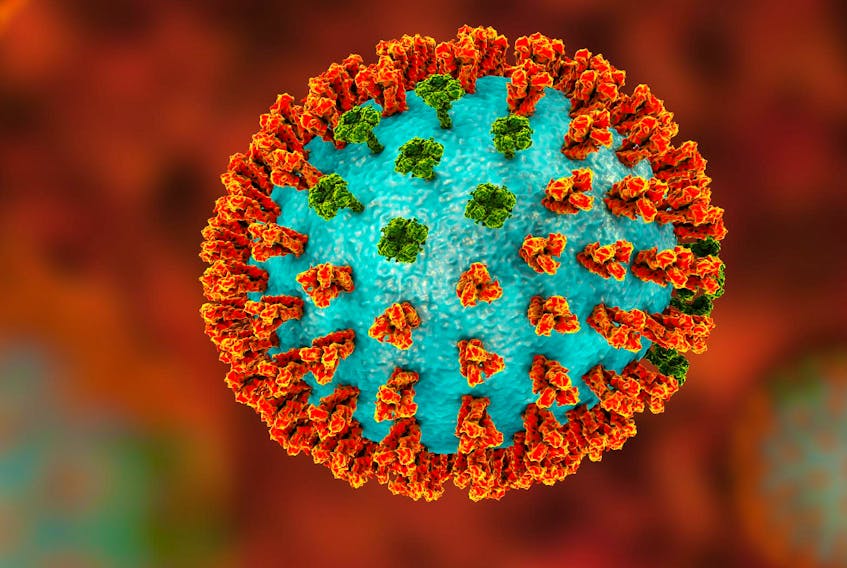At least 42 people had died of the flu in Nova Scotia when the Public Health Agency of Canada alerted the province of an atypical flu strain immune to the latest vaccine.
Dr. Robert Strang, Nova Scotia’s chief medical officer of health, got the April 5 alert recommending that he spread the word to doctors and other health care professionals in Nova Scotia to prescribe antivirals when treating people with the flu.
It was a precautionary measure meant to offer an added layer of defence against the atypical H3N2 virus. The alert was issued to all provincial public health agencies but Strang opted not to heed the advice of the federal health agency.

“If you look at the alert it doesn’t say we had to, it says jurisdictions should consider,” said Strang. “Based on our own local epidemiology, we really felt like where we were at in the flu season it was highly unlikely that there was going to be much attention paid to that message.
“We were well past the peak of the flu season so the risk to Nova Scotians was decreasing substantively from week to week.”
As of March 30, the province’s weekly flu report shows there were 42 influenza-related deaths in the 2018-19 flu season. Just a few weeks later, in the April 27 report, the number of deaths jumped by 10 to 52. There were two more deaths recorded in the following two reports. The latest death count stands at 66, according to the most recent report ending July 20.
Mainly two strains of the flu, H1N1 and H3N2, circulated Nova Scotia this flu season but the weekly flu reports do not show which strain of the virus caused each flu death. The province doesn’t make that information public nor would the Department of Health provide the data to The Chronicle Herald. The provincial flu watch also doesn’t differentiate cases of H1N1 and H3N2 in the province. Instead, they combine both under the category Influenza A. Most other provincial flu reports, including P.E.I. and New Brunswick, track cases of both H1N1 and H3N2.
A Nova Scotia family doctor said she’s shocked that Strang chose not to provide her or her colleagues with what she calls vital public health information. The doctor asked that her name not be used for fear of retribution from the province’s Department of Health.
“It’s highly irresponsible and I’m shocked that Dr. Strang would unilaterally decide not to reveal this information because this is very important for family doctors, for family doctors on the front lines and pharmacists and emergency room doctors.”
“I have to identify people that have flu-like symptoms and the people that are at the highest risk of getting very sick and hospitalized or could die. I need to treat them with the antivirals as soon as possible because that’s my job.”
Avoidance Strang's focus
Meanwhile, Alberta Health Services moved quickly to share the contents of the federal Public Health Agency alert with the province’s medical community as well as the public. On the same day the alert was issued the province’s health authority posted news of the near country-wide spike in H3N2 cases on its website, advising front-line practitioners to consider “early use of antiviral medications for treatment in high risk patients.” The communicable disease advisory also provided general guidance around the use of antiviral therapies for the management of influenza.
Rather than sharing information from the alert with doctors and the public, Strang said his department opted instead to raise awareness about the ways in which to avoid getting the flu.
“We enhanced our social media around hand-washing and social distancing and all the other things that people can continue to do to prevent the spread of the flu,” said Strang.
Dr. Gary Ernest, president of Doctors Nova Scotia, said there’s nothing upsetting about Strang’s decision not to share the federal Public Health Agency alert with the province’s medical community or the public in general.
“A front-line physician would know how to look after people with influenza irrespective of this bulletin,” said Ernest. “It’s not going to change the way a front-line physician or emergency physician is going to treat influenza. They will treat patients appropriately based on the symptoms they present.”
The federal Public Health Agency states the flu vaccine’s effectiveness against H3N2 is usually low, falling below 40 per cent, and April’s alert was meant to encourage “provincial and territorial health departments to raise awareness among clinical care providers of the ongoing circulation of influenza across the country, and to reinforce the use of influenza antivirals among persons with a clinical illness compatible with influenza.”
“With the A(H3N2) wave occurring so late this season, there was the potential for even lower effectiveness, because the body’s immune response from vaccination wanes over time,” said agency spokesman Geoffroy Legault-Thivierge. “Due to the potential for influenza A(H3N2) to cause severe illness in some populations and the potential for low vaccine effectiveness, the Public Health Agency of Canada reinforced the use of influenza antivirals in the alert.”
But that alert went no further than the province’s public health agency. As far as the Nova Scotia family doctor is concerned there’s no excuse to justify that.
“It’s like finding out there’s a measles outbreak and the province’s public health agency deciding that they’re going to contain it and it doesn’t really matter,” she said. “There’s a new outbreak, an atypical virus of the flu spreading across the province. Why would Dr. Strang treat that information any differently than if it was a measles or chickenpox outbreak?”
RELATED:









